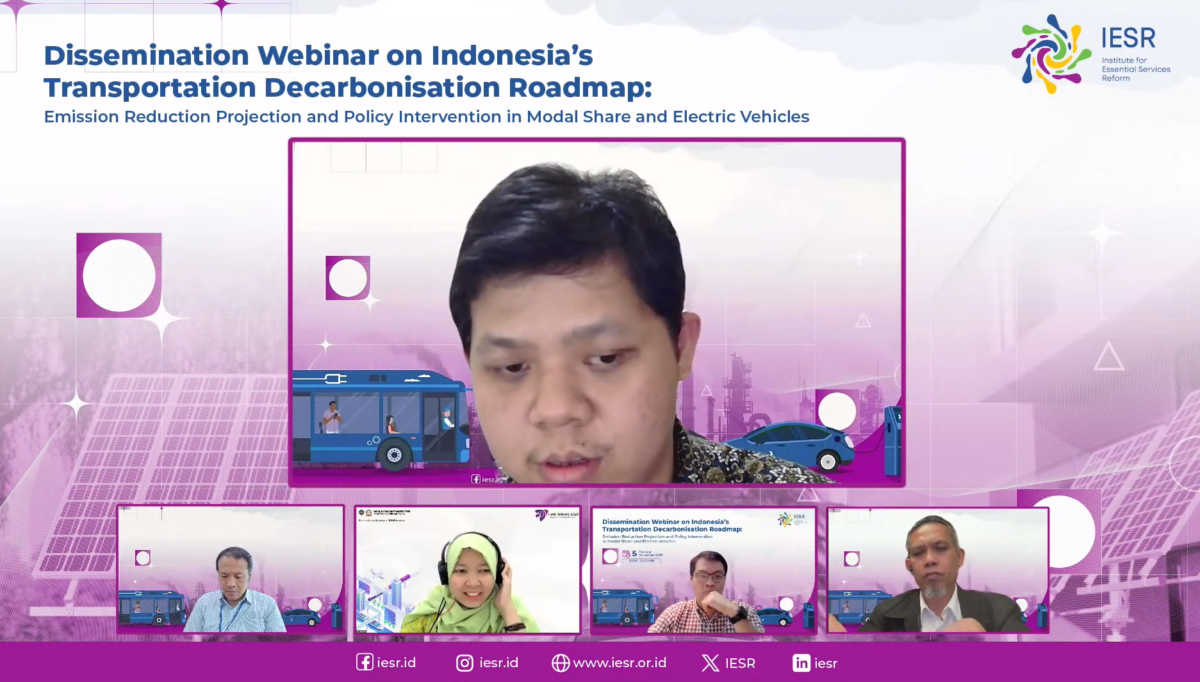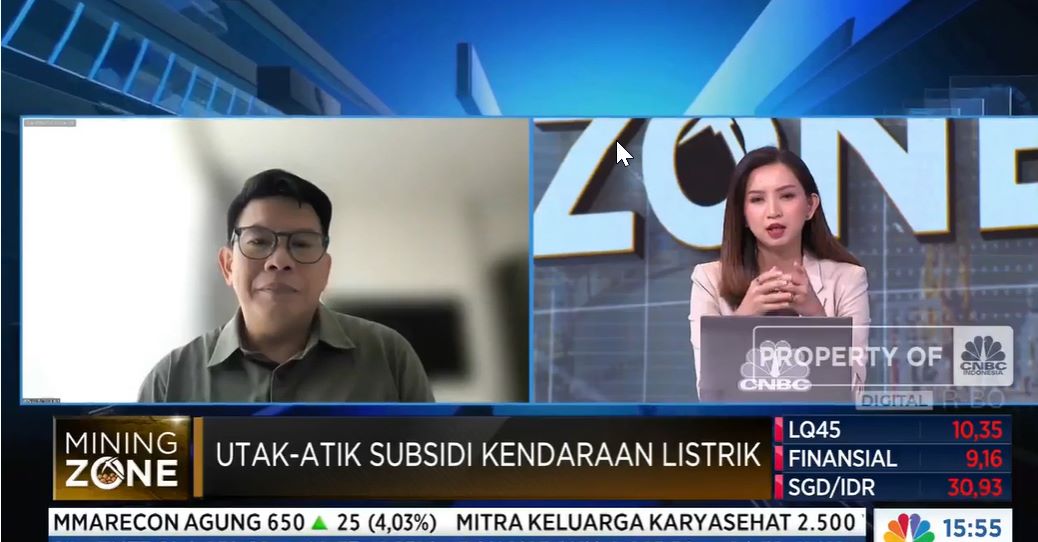The target of using 15 million electric vehicles by 2050 is predicted not to be achieved. Incentives for electric vehicles are considered still small so that it does not attract people to use electric vehicles.
Read more on Kata Data.

Jakarta, 5 December 2023 - Since 2021 the transportation sector in Indonesia has been ranked as the second highest emitter, displacing industry. Many emissions from the transportation sector are caused by burning fuel, which is the main energy source for vehicles. With projected economic growth and development plans, it is predicted that emissions from the…

Jakarta, December 5, 2023 - A significant reduction in emissions from the transportation sector is a strategy to achieve zero emission by 2050 per the Paris Agreement, or net zero emission (NZE) by 2060, as the Government of Indonesia targets. To turn this commitment into an actionable strategy, developing a comprehensive roadmap for decarbonizing the…
Developing Indonesia’s battery industry is expected to remain a challenging task, as the industry is still beset with a lack of regulation and an unclear path forward, which many fear could hamper the country’s electric vehicle (EV) ambitions.
Read more on Jakarta Post.
At the beginning of last week, on Monday (11/9), South Korea's leading battery and materials manufacturer, LG Energy Solution, announced its readiness to compete with China in the rechargeable battery market for lithium iron phosphate (LFP) electric vehicles. LG Energy Solution Co.'s Chief Technology Officer, Shin Youngjoon, stated that China's penetration into the rechargeable battery…
The use of electric vehicles continues to be echoed by the government, both central and regional, as a way to reduce air pollution which is getting worse. However, observers said it "will not solve the problem" and called electrification a "false solution".
Read more on BBC.
The Institute for Essential Service Reform (IESR) assesses the government has appropriately regulated electric car battery charging service rates at Public Electric Vehicle Charging Stations (SPKLU).
Read more on Kontan.
The government is intensifying campaigns for the use of electric vehicles to reduce emissions from the transportation sector. However, the supporting infrastructure, such as public electric vehicle charging stations (SPKLU), has yet to be spread evenly in Indonesia.
Read more on Kata Data.
Executive Director of the Institute for Essential Services Reform (IESR), Fabby Tumiwa, said that despite much criticism, the electric vehicle incentive policy still needs to be continued in 2024, even though the leadership regime has changed.
Read more on Kumparan.

Jakarta, May 11, 2023 - Executive Director of the Institute for Essential Services Reform (IESR), Fabby Tumiwa, stated the Government of Indonesia provided electric vehicle incentives as one of the strategies to open or develop the electric vehicle industry itself. However, Fabby stressed that there are better solutions than incentivizing electric vehicles to overcome the…
The transition from fossil-fuel vehicles to electric vehicles is one of the Indonesian Government's efforts to curb global warming.
Read more on Kompas.
According to Faris Adnan, IESR Researcher, online ojek drivers and couriers must be prioritized. He considered electric motorbikes to have economic benefits for workers whose transportation depended on motorbikes.
Read more on Detik.
